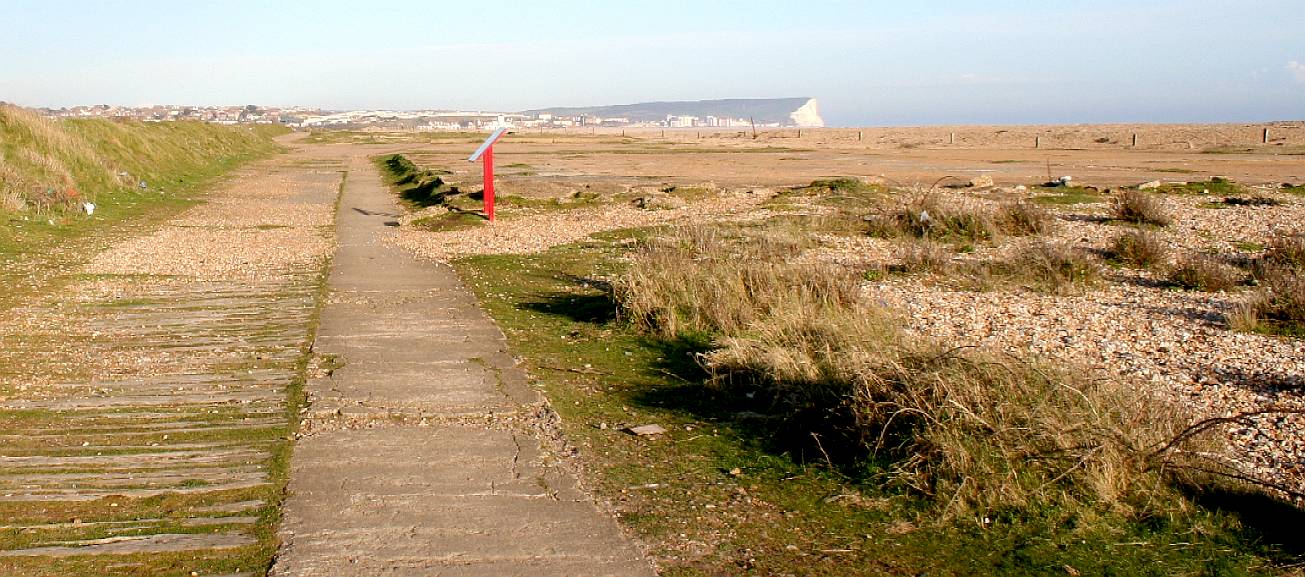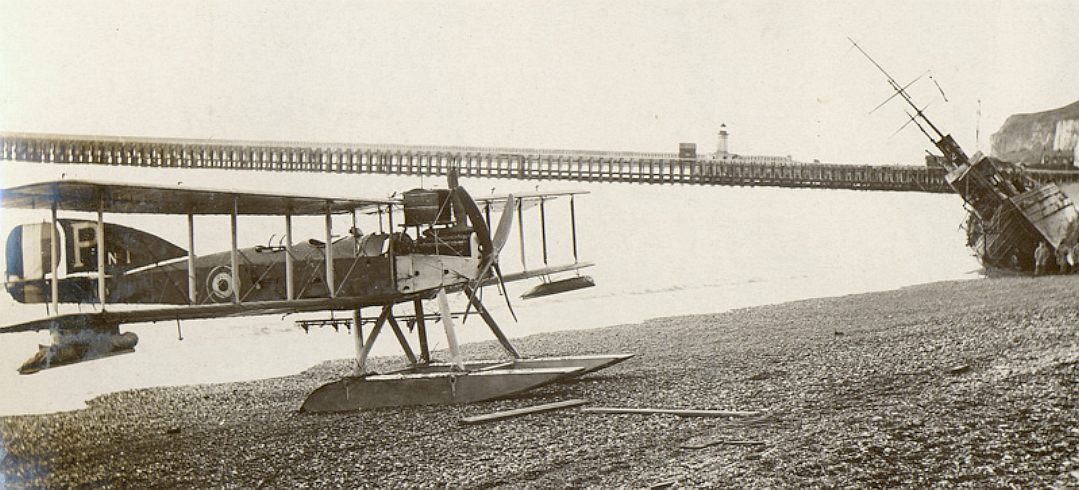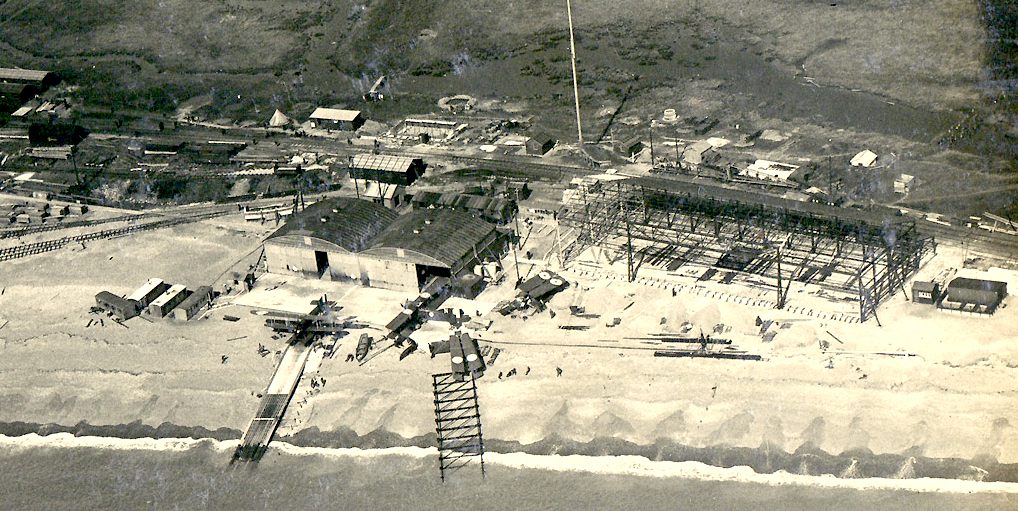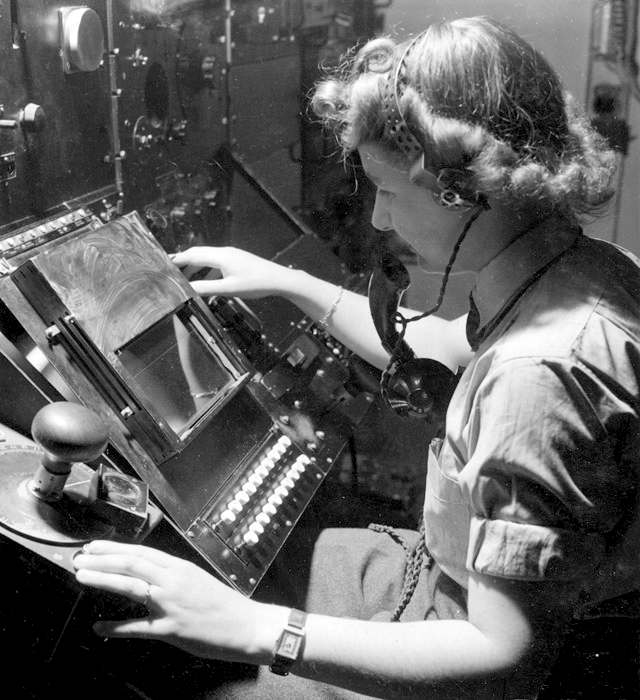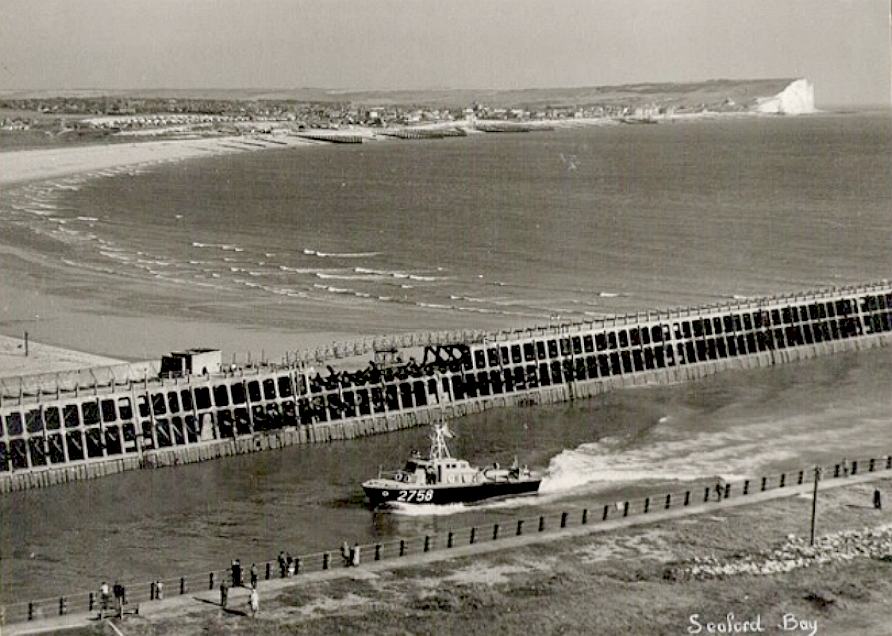|
RAF NEWHAVEN (SEAFORD BAY) AIR STATION
|
|
|
WWI SEAPLANE STATION - During the First World War, Newhaven was a major supply port for the Western Front. Seaplanes from Newhaven would patrol the sea between Dungeness and the Isle of Wight, operated by the Royal Naval Air Service (RNAS). As you can see in the picture above, all that remains of the station is the concrete bases and a few railway sleepers. Copyright © April 12 2016, all rights reserved. You will need permission from Bluebird Marine Systems Ltd to reproduce this photograph.
78
SQUADRON
Newhaven was designated as the principal port for the movement of men and materiel to the European continent during World War I, and was taken over by the military authorities and the ferries requisitioned for the duration of the war. Between 22 September 1916 and 2 December 1918, the port and town of Newhaven were designated a 'Special Military Area' under the 'Defence of the Realm Regulations', and the Harbour station was closed to the public. The port and harbour facilities, rail sidings and warehousing were greatly enlarged at this time and electric lighting installed to allow for 24-hour operation. Some 17,000 crossings of the Channel took place and over six million tons of supplies were carried to the French coastal ports. Eleven of the ships were lost to enemy attacks from mines, submarines, aeroplanes or destroyers and about a hundred of the seamen, who had become well known to the local townspeople, were killed. Many survivors of the ships were brought back to the port.
WWI PORTACABINS - RAF Newhaven consisted of three railway carriages and two hangars. You can see another hangar under construction to the right. The East Sussex coastline was a frontline defence against possible invasion, though Dad's Army would be another twenty-one years in the making.
SEAPLANE BASE
Newhaven Seaplane Base is today the derelict site of an experimental seaplane base at the head of the beach east of Newhaven Harbour, seaward of Tide
Mills in East Sussex, England.
In January 1917, Germany declared unrestricted submarine warfare from the 1st of February. By May of 1917 the importance of protecting shipping from submarine attack gave rise to a Seaplane Station operated from Newhaven. What is unusual about this air station is that the biplanes were beach launched sea-planes.
The
seaplanes rolled down a slipway into the sea and then took off. Landing was a
reverse of the take-off procedure, the planes touched down in the sea
and made their way to the slipway, where they were winched up the beach.
The harbour has developed considerably since World War Two, whereas the Tide Mills and Seaplane Station have all but been forgotten. The immediate port are of Newhaven is run down, without any obvious plan to regenerate the area that we could identify.
EXTENSION - In 1918, the Station was extended with the addition of another larger seaplane shed (180ft x 60ft – approximately 54.9m x 18.3m) designed for repairing damaged aircraft. Newhaven Seaplane Station was initially home to four Short 184 floatplanes, later supplemented by a few Fairey Campania and three Fairey IIIB seaplanes. On 1st April 1918 the Royal Flying Corps merged with the Royal Naval Air Service to become the Royal Air Force (RAF). The aircraft stationed at Newhaven formed 408 and 409 flights, which were incorporated into 242 Squadron in July 1918.
DISBANDED - On 15 May 1919, the squadron was disbanded. The foundations and railway sleeper mounts still survive. The area was taken over as holiday homes after the first war and lasted until 1941 when the site was cleared for WWII defence purposes. We are still at war, but now the global enemy is plastic waste.
A seaplane’s full load consisted of one 112lb and two 50lb bombs. There was a Lewis machine gun mounted on the observer’s cockpit, in case of attack by enemy aircraft. The observer also carried a loaded revolver and a ‘Very Light Pistol‘. The pistol, invented by American Naval Officer Edward W. Very, fired coloured flares (Very lights), which could be used for signaling. If the seaplanes came across a submerged submarine, which wasn’t in a prohibited area, their orders were to bomb on sight.
Newhaven Seaplane Station was officially closed in May 1919 and the
buildings were auctioned off in the 1920s. One of the wooden sheds was
relocated to the East Quay, where it was used as a bonded wine
warehouse. It was completely destroyed by fire in the 1960s. The larger
shed was used to manufacture the 50ft (15.2m) concrete piles, which
replaced the rotting ones in the harbour. You can still see one on the
beach. The shed was finally relocated to Wimbledon where it was used to
store railway equipment for the electrification of the line. It was
granted Grade II Listing on 23rd July 2012.
CONTACTS
The
Newhaven Port & Properties Ltd
http://www.newhavenportauthority.co.uk/
WAAF operator, Denise Miley, RF7 chain home plotter WWII
WORLD WAR TWO
Seaford Bay appears to have been cleared of anything that might assist an invading force, and tank and other obstructions installed.
During World War II, large numbers of Canadian troops were stationed at Newhaven, and the ill-fated Dieppe Raid in 1942 was largely launched from the harbour. As one of the few ports within the proposed landing area, Newhaven was targeted by the German invasion plans for Operation Sea Lion and additional guns and fortifications were added in 1940.
In 1944, Newhaven was an important embarkation port for the D-Day landings. At any one time the port could handle four medium coasters, 3 LCT, 1 LCI and 1,800 troops per embarkation and 19 vessels per 24 hours.
WWII NEWHAVEN FORT - A gun emplacement was built into the cliff face just to the west of the harbour entrance. This is now open to the public. In the distance in the above picture you can see what remains of the First World War launch and recovery slipway - and closer to the breakwater, what appears to be a beached submarine.
AIR SEA RESCUE - The RAF operated a rescue service from Newhaven harbour during and after the Second World War, until the 1960s.
The Port of Newhaven is a port and associated docks complex located within Newhaven, East Sussex, England, situated at the mouth of the River Ouse.
HERITAGE INDEX A - Z
AVIATION - EASTBOURNE BARCLAYS BANKING LET DOWN - MISSING ACCOUNT MONEY BARON CARL VON ROEMER & CHARLES de ROEMER CAMPBELL HALL - BLUEBIRD ELECTRIC CARS GAS ENGINES - COAL CONVERSION, INTERNAL COMBUSTION OBSERVATORY - HERSTMONCEUX CASTLE SOLAR LADY - STATUE
LINKS & REFERENCE
Maureens Choice A_Sussex_Sunset Wikipedia Newhaven_Seaplane_Base https://en.wikipedia.org/wiki/Newhaven_Seaplane_Base http://www.raf.mod.uk/ http://www.tyrrellsussexbooks.com/books_3.php http://www.maureenschoice.co.uk/book_windows/a_sussex_sunset.html
The Dam Busters is a 1955 British war film, set during the Second World War, and based on the true story of the RAF's 617 Squadron, the development of the "bouncing bomb" and Operation Chastise, the attack and destruction of the Ruhr dams in Germany that supplied munitions factories, a victory accomplished only through the painstaking invention of a new "bouncing bomb" by Barnes Wallice.
|
|
|
This website is Copyright © 2017. All rights reserved. All other trademarks are hereby acknowledged. Contact Us www.cherrymortgages.com
|
